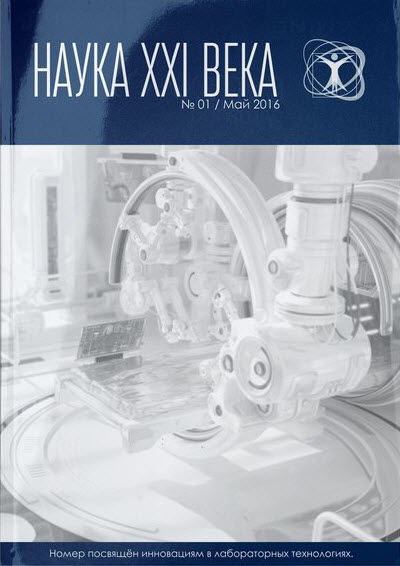Срочная публикация научной статьи
+7 995 770 98 40
+7 995 202 54 42
info@journalpro.ru
How to become an effective teacher?
Рубрика: Филологические науки
Журнал: «Евразийский Научный Журнал №5 2017» (май, 2017)
Количество просмотров статьи: 3422
Показать PDF версию How to become an effective teacher?
Ashurova N.A.
(Самаркандский Государственный Институт иностранных языков)
“The man who can make hard things easy is the educator” Ralph Waldo Emerson.
We know that some students are very active and others “the legs”, it means slower learners. We try to work with them individually. I think, teachers should be able to see all students all times. Student desks should be arranged so, that the teacher can see everybody from any instructional area where he or she may be working. The teacher seemed to have “eyes in the back of her head”. Teachers must often consult them with any questions. Students need a clear understanding of what they are expected to learn and they need to be motivated to learn it. We must help students review learning before presenting new information. Before presenting we can reteach them if, there is confusion. We try to give several examples and illustrations to explain main points and ideas.
Teacher’s voice must be clearly, softly. They must give directions distinctly and slowly. If students are confused about what they are supposed to do, we repeat or break information into small segments.
As teacher we must demonstrate personal enthusiasm for the academic content and make it clear why the information is interesting and important and at the end of the lesson we can close the lesson with a brief review or summary.
Effective teachers ask questions frequently to check for student understanding and make sure that students are ready for independent work using new skills and knowledge. We know that weekly and monthly reviews offer students the opportunity for more practice, a strategy related to high achievement. All students are interested in knowing their balls (marks).
Studies on mastery learning show that it is a powerful tool that has the following effects on teaching and learning. They are:
1. Students achieve more and remember what they have learned longer.
2. Teachers have more positive attitudes toward teaching and higher expectations for their students.
Research shows that effective teachers have strong interpersonal skills. They accept, respect, empathize with, and take care about their students’ achievement.
I think, every people remember their skilled, effective teachers. It is one of the “sweet dreams” in our life. You often miss that time. In one word teaching is not an insignificant, irrelevant, paper-shuffling kind of a job. It has meaning, worth, and value. It gives you the opportunity to touch a young and impressionable life and make it better. As a teacher, we will have a rare privilege and responsibility: you can effect and change the lives of children.
We realize that the role of a teacher in the classroom not only to teach a special subject, but also develop critical and independent thinking. Teachers must be advisor and friend. Critical thinking is more important in developing our new generation, because every student has its own feeling, emotions, a point of view.
We must often give them special questions that they are able to answer. Through debates they can learn making judgments, conclusion, and arguments. As any smart teacher knows, student interests can be maintained by moving from one activity to another during a single room. Following is a sampler of activities teachers can use to maintain student interest by varying the pattern of the English lesson. E.g.: discussion, contests, lecture, creative writing, movies, tapes, board work, role plays, music activities, tutoring, small group activities, student presentations, tests, silent reading, games, debates, brainstorming sessions and others. These types help students be more active and sociable.
During the lesson of phonetics, we often use audio materials. Post — task speaking activities that provoke students to render certain meanings using different intonation and other phonological feathers, e.g. Role-play, gap filling, or recording and analyzing conversations.
Some highly effective teachers go a step further, consulting with their classes to establish learning goals, codes of behavior and ways of enforcing acceptable behavior.
During the practical course of grammar, we also try to use any types of games, presentations, explanations and audio-visual aids.
We suggest the following types of grammar presentation techniques:
1. Visual techniques.These pertain to visual memory, which is considered especially helpful with the grammar retention. Learners remember better the material that has been presented by means of the visual aids. The visual techniques lend themselves well to presenting concrete items of grammar. They help students to associate the presented material in a meaningful way and incorporate it into their system of the language units.
2. Verbal explanation. This pertains to the use of illustrative situations connected with the grammar material studied. Games, as Richard Amato thinks, are to be fun, but he warns against overlooking their pedagogical value, particularly in foreign language teaching programmers. There are many advantages of using games in grammar.
During our lessons, we often use any types of interactive methods, as cluster BBB, brainstorming and others.
I want to give a conclusion with Jaime Escalante de Escalante own words. He once said: “The teacher has to have the energy of the hottest volcano, the memory of an elephant, and the diplomacy of an ambassador... Really, a teacher was to possess love and knowledge and then has to use this combined passion to be able to accomplish something”.
LITERATURE
- Krilova I.P. Let’s talk about Professions and Hobbies. —Москва, 1982.
- В.Д.Аракин. практический курс английского языка. —Москва, 2003.
- M.Sydney. School, teachers, and society. —New York, 1991/









